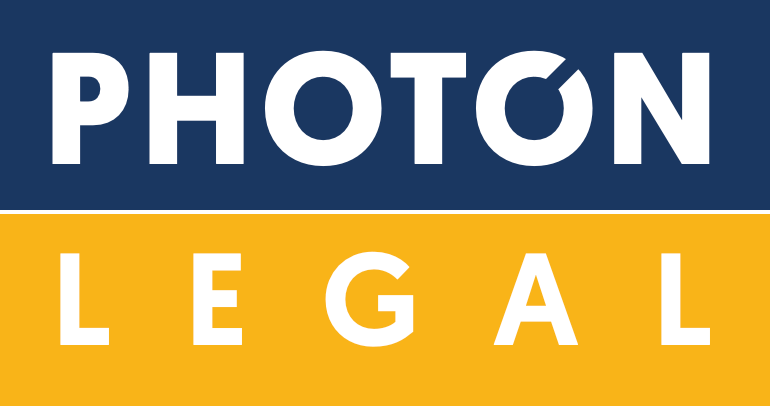Introduction
Trademark is any sign, or mark used to distinguish the goods and services of one person from the other, or to identify the origin of such goods and services. There is a general understanding however, that a trademark only refers to words, symbols, or logos. This understanding is only partly true since words, symbols, and logos are not the only marks capable of being used as a trademark for one’s business. With the advent of development in Intellectual Property law – other forms of marks like sound, taste, smell, texture, motion, shape, can also be trademarked. These developments have manifested in different ways; the most striking of which is the international Agreement on Trade-Related Aspects of Intellectual Property Rights (TRIPS) which lays down definitions and certain minimum standards with respect to intellectual property rights including trademarks.
Non-conventional trademarks
These can therefore be understood in the sense of any mark that doesn’t fall within the traditional domain of either being a word, symbol, or logo, and capable of being solely recognized and distinguished by the human eye. There are non-conventional trademarks that are visual such as colour, shape, motion, etc. in addition to non-visual marks such as smell, taste, texture, sounds, etc. An example of non-conventional visual mark includes the peculiar triangular shape of Toblerone chocolates which has been recognised in the EU, and that of a non-visual mark includes the sound mark of Nokia.

Graphical Representation of trademarks for registration
An essential component of getting any type of mark registered is the requirement to be able to represent it in a graphical manner. This essentially means being able to put it in on ‘paper’ and being able to preserve and publish a copy of the same in the Trademark Registry.
Types of non-conventional trademarks
1. Colour Marks
Colours are one of the first things to be noticed by people and thus, it is most prudent to utilise this first impression while building on the identity of a business. Marks that use at least one colour to obtain a distinctive identity in relation to goods or services are referred to as a colour mark. Colour marks can be registered as a single colour or alternatively, a combination of colours. Unlike traditional trademark registration, a colour mark can only be trademarked if it has already acquired distinctiveness due to its use in trade i.e. the colour is enough to identify the source of the goods and services.
The European Court of Justice (ECJ) previously pointed out that it is not usual for one to identify a product on the basis of colour alone. In such a scenario, it would be anti-competitive to grant trademarks for single colours as only a limited number of base colours are available. That doesn’t mean that trademarks for single colours are not granted – for instance, Louboutin, a brand known for selling footwear, is characterized by its peculiar bright red sole.
On the other hand however, Cadbury lost its colour mark for the purple that adorns their chocolate packets in UK. One of the reasons for the UK Court to carry out such measure was to prevent one business from permanently monopolizing a certain colour. Even in India, the Delhi High Court refused Louboutin’s trademark rights over the red colour on similar grounds as the UK Court by refusing to grant a trademark for a single colour.
Nevertheless
Single colour trademarks have been granted in India – for example the distinctive purple colour of Cadbury and the Parachute oil blue despite it being a base colour. It is difficult to say if Parachute will continue to retain its trademark for blue if it is challenged in the future, but it will be interesting to see how such a battle might pan out in court. Other instances of trademarks granted to a combination of colours include the green & yellow used on John Deere tractors, and Starbucks’ green circle on a white cup thereby adding to its distinctiveness.

But how do you represent a colour graphically? It is not enough to put the colour applied for on a paper to fulfil this requirement. Numerous jurisdictions like the US, and EU follow the international colour standard – Pantone, to describe colours.
Therefore, to have best chances of getting a colour mark registered, try to use a combination of colours as opposed to single colours as the former has higher chances of appearing distinctive.
2. Sound Marks
Sounds marks, as the name suggests, is a type of mark where a sound is used as a trademark. With the growth of social media platforms utilising the audio feature like TikTok, Instagram Reels, etc. sound has assumed an essential role in identifying a business. Usually, there are two essential requirements for registering any sound mark
- The trademark application must mention that the mark applied for is a sound mark; and
- A graphical representation of the same must made in the form of musical notations, or where possible, the sound must be able to be described on paper.
For instance – The MGM Lion’s roar which can’t be represented using musical notations would be described as ‘a lion’s roar’. The first sound mark to ever be registered in India was the Yahoo’s yodel. Other well-known sound marks include the Looney Tunes Theme Song, the well-known sequence of Raymond: the Complete Man, Britannia’s four note bell sound, etc.
However, not all sound marks are registrable – if the sound mark applied for is not distinctive enough, it maybe denied registration. For example – In 2013, Anheuser-Busch InBev, a beer company applied for registering a sound mark which consisted of “Two clicking sounds at intervals” aimed at resembling the sound of a beer can opening. The Examiner went to the extent of recording a video of himself opening a beer can along with a can of Coca-Cola and held that the Anheuser-Busch’s sound mark was not distinctive as all cans made a similar sound when opened.
Therefore, for your sound mark to have the best chance at being registered, make sure that it is distinctive i.e. not generic in nature like snippets of well-known popular music, nursery rhymes, or other common sounds; and that you own the copyright of the sound being applied for.
3. 3D Marks/Shape marks
When a particular product can be identified based on the shape and/or its packaging, then a 3D mark may be applied for. Although there are numerous factors that fall into consideration while assessing the applications for 3D marks – what is of paramount importance is whether the shape or packaging has become indispensable to the recognition of the product.
In 2019, the Intellectual Property Office of Singapore denied registration to the 3D mark to ‘Ferrero Rocher’ for its well-known chocolate covered balls wrapped with a golden paper by stating that the packaging was not distinctive by itself without the sticker with its work mark. On the other hand, prior to this, India granted protection and awarded damages to Ferrero Rocher against a Chinese Company for infringing on its packaging or trade dress.
Other well-known 3D marks include Kit-Kats chocolates with wedges, and the shape of a Coca-Cola bottle, Zippo lighters.

Some practical tips to keep in mind while applying for a 3D mark are – to ensure that your product can be identified even in the absence of the word mark or label solely on the basis of its shape, and to provide clear, and uniform graphical representations of the mark from different angles.
4. Smell Marks
The petrichor after the first rain each year, or the smell of freshly ground coffee when one walks into a coffee shop, are all sufficient to bring back memories and transport you to a different place. The sense of smell in humans is extremely potent and capable of being registered in the human memories – it has the ability to evoke emotions and is capable of affecting the consumer’s attitude towards a particular product.
Unlike other non-conventional marks, even though in theory smell marks can be granted, only a few have been registered till date. In the case of Ralf Sieckmann v. Deutsche Patent und-Markenamt, Ralf Sieckmann, a German patent attorney, filed an application for a smell mark for the chemical methyl cinnamate. He tried representing the smell with its chemical formula and also noted that the scent was “balsamically fruity with a slight hint of cinnamon.” The German Trademark office and the ECJ both refused trademark for the scent as it held that a chemical formula wasn’t sufficient to infer any smell. Moreover, the representation of the smell must be clear and precise.
Moreover
India’s position on registering smell marks is similar to that of the EU in the Ralf Sieckmann case. Although the Trademark Act and Rules provide for registration of smell marks, not a single smell mark has been registered in India till date and no guidelines have been issued by the Trademark Registry on how to represent smell marks graphically.
In contrast to the above, the USPTO first approved registration for smell marks back in 1990 for a mark identified as “a fresh, floral fragrance reminiscent of Plumeria blossoms” for sewing thread and yarn. Smell marks for fragrance of rose on tyres was granted to Sumitomo Rubber Co., and the fragrance of bitter beer on darts was granted to Unicorn Products by the UK Trademark office.
Therefore, due to the absence of clear and uniform guidelines and numerous practical barriers, registering smell marks still remains a contentious issue across jurisdictions.
Conclusion
Non-conventional marks continue to remain a contemporary concept, and although there exist barriers to its registration – these must not be considered as a discouragement to apply for non-conventional marks. On the contrary, these obstacles are proof of the growth and development of Intellectual Property law and must be seen as stepping stones to the incorporation of new methods of distinguishing one’s business.
At Photon Legal, we have been advising and helping our clients for registering their trademarks in record time for years. So get your trademarks registered today to protect and grow your business! If you have any queries or require assistance, please reach us at photon.ip@photonlegal.com.
Author: Amit Koshal and Anushka Iyer

